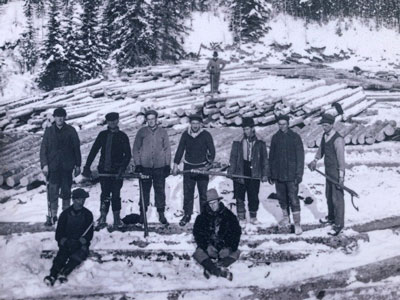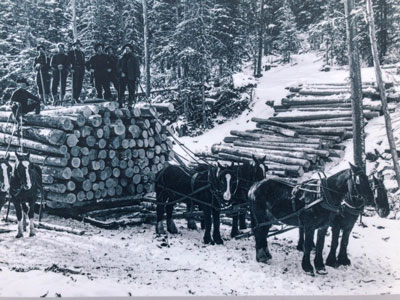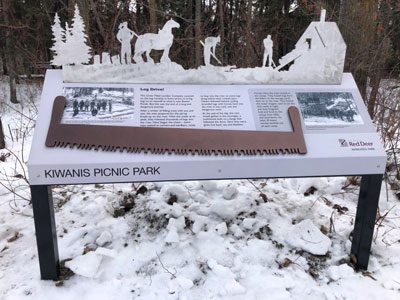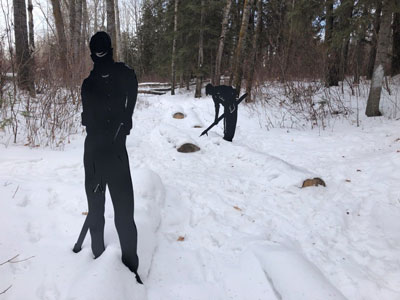Hidden in Plain Sight: Red Deer's logging roots
February 07, 2020
For most of the tens of thousands of people who visit Red Deer’s Bower Ponds and Kiwanis Picnic Park recreation areas every year, they’re just that: a place to relax with family and friends, roast a hot dog, go for a bike ride, lace up the skates, or maybe wander through nature in a paddle boat.

What many park users might not know, is that as they follow the path from the Kiwanis Park boat launch to Bower Ponds, they’re walking or cycling alongside an important piece of Red Deer’s history.
“It’s one of those things that, unless you’re multi-multi-generational Red Deer, or really keyed in to Red Deer history, people just don’t know about it”, said Todd Nivens, Executive Director of the Waskasoo Environmental Education Society.
From the late 1800s until 1916, the canal directly north and west of the cycling path was a log “raceway”, used for transporting logs from the Red Deer River to the Great West Lumber Company, which operated in the area of the present day Bower Ponds. All winter long, hundreds of workers at logging camps in the foothills near Sundre would manually harvest spruce and pine using axes and saws, then load them onto horse-drawn wagons or stack them beside the river. Come spring, the logs would be released into the flooded river for the long journey to Red Deer.

A logging crew taking a break for a photo at a camp near Sundre.

A hard day’s work loaded onto a horse-drawn carriage to be stored until spring thaw on the Red Deer River.
“Log drivers would float them down the river until they got to just upstream of where the arched bridge is, that leads to Heritage Ranch now,” says Nivens.
A large chain was stretched across the river where the Red Deer Golf and Country Club stands today. It directed the logs into the 2.4 kilometer raceway and then on to the mill ponds, where they were stored until needed.

One of three new interpretative signs explaining Red Deer’s logging history
To experience the history for yourself, walk from the Kiwanis Picnic Park parking lot towards the boat launch and look left just before crossing the path. You’ll see three interpretive signs filled with incredible details about the raceway and sawmill. Life-size silhouettes and log elements have also been installed in the now-dry canal, as part of The City’s Waskasoo Park Interpretive Master Plan.
“These are the guys that would be moving the logs, clearing out the jams, making sure that everything keeps moving so that they get into the pond,” explains Nivens.

Life-size silhouettes of raceway loggers, steering the logs toward the Great West Lumber Company
A large chain conveyor would pick the massive logs out of the pond and drag them up to the sawmill, to produce lumber for one of Alberta’s most rapidly-growing towns. In 1900 and 1901, the mill produced over half a million board-feet of logs (a measurement of lumber volume equal to one foot long, one foot wide and one inch thick).
The next time you walk or cycle from Bower Ponds to Heritage Ranch, take a glance back across the river to the southwest corner of the golf course. If you look closely, you can still make out the entrance to the once-bustling raceway more than 120 years later!
To learn more about The City of Red Deer’s Waskasoo Park Interpretive Master Plan, visit www.reddeer.ca/recreation.